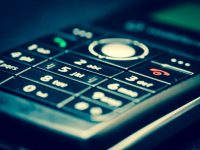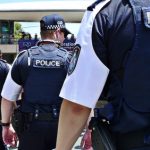Criminal Lawyer Fails to Contest Dodgy Evidence

It has been reported that Adnan Syed, the subject of the Serial podcast series, has filed a new motion to exclude faulty mobile phone evidence from his case. The Motion claims the evidence is unreliable, as Syed’s phone provider AT&T itself warned.
Adnan Syed, 35, was convicted of killing his ex-girlfriend Hae Min Lee in 1999. He has been serving a life sentence since 2000. In 2014, journalist Sarah Koenig launched a podcast “Serial” after hearing about his case, and questioned whether the prosecution’s evidence against Syed was solid enough for a conviction.
The 12-episode podcast has been downloaded over 5 million times, launching Syed’s “closed” case back into the spotlight, and bringing into question what kind of evidence should be relied upon in criminal trials.
The Prosecution Case
Hae Min Lee’s body was found by police buried in Leakin Park, Baltimore. No physical evidence or eyewitnesses linking Syed to the killing were produced at trial. Instead, the state’s case turned on two pieces of evidence. First, the testimony of Jay Wilds, one of Syed’s school friends who claimed he helped dispose of Lee’s body. Second, evidence of phone calls Syed received on the night in question.
The podcast questioned whether Syed’s criminal defence lawyer was competent: as she failed to use conflicting testimony that provided an alibi for Syed, and also failed to scrutinise untested evidence from the crime scene.
But most problematically, the defence lawyer failed at trial to raise the warning from AT&T that “outgoing calls only are reliable for location status. Any incoming calls will NOT be considered reliable information for location.”
Phone Evidence Against Syed
On the night Hae Min Lee was killed, Syed received two incoming calls: one at 7:09pm and one at 7:16pm. Police used location data to track Syed’s location at the time. They alleged that the calls went through a phone tower at Leakin Park, where Lee’s body was found.
This was used to establish that Syed was at the murder scene on the night in question.
But, as his new defence lawyer C. Justin Brown pointed out, this evidence is highly unreliable. In his submission, the evidence should be excluded from Syed’s case on the basis that it is unfairly prejudicial.
In his motion, Brown wrote “If AT&T, the architect and operator of the cell tower network, did not think incoming calls were ‘reliable information for location,’ it is unfathomable that a Baltimore City Circuit Court judge would have allowed an expert opinion…under this method.”
The motion is due to be heard in Baltimore Circuit Court.
Digital Evidence in Criminal Proceedings
As technology progresses, the range of evidence available to police and prosecutors expands. But it’s important to note that, despite its portrayal on crime shows, digital and forensic evidence often unreliable.
In Australian jury trials, judges are required to warn the juries when evidence is considered to be unreliable. For example, if an alleged accomplice giving evidence against the accused, the jury has to be warned that it would be dangerous to convict unless that information is corroborated. Warnings also need to be given about identification evidence and admissions.
In the case of Syed, there was no corroboration of the testimony given by Jay Wilds, except for the unreliable evidence about phone tower data.
If that evidence were excluded, it would appear that Syed’s conviction was based upon the unreliable testimony of an alleged accomplice.
This appears to be less-than satisfactory – and seriously calls into question whether Syed should have been convicted at all.






